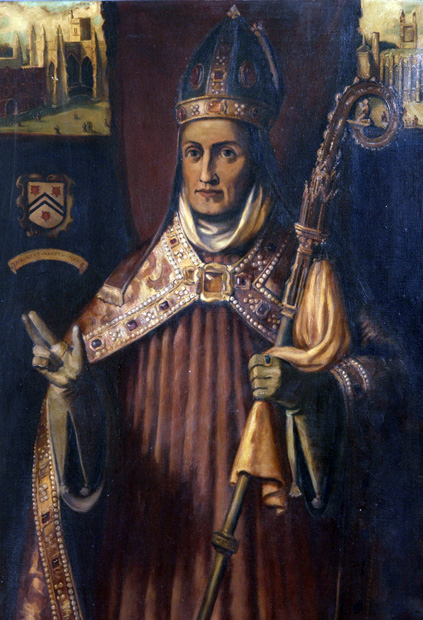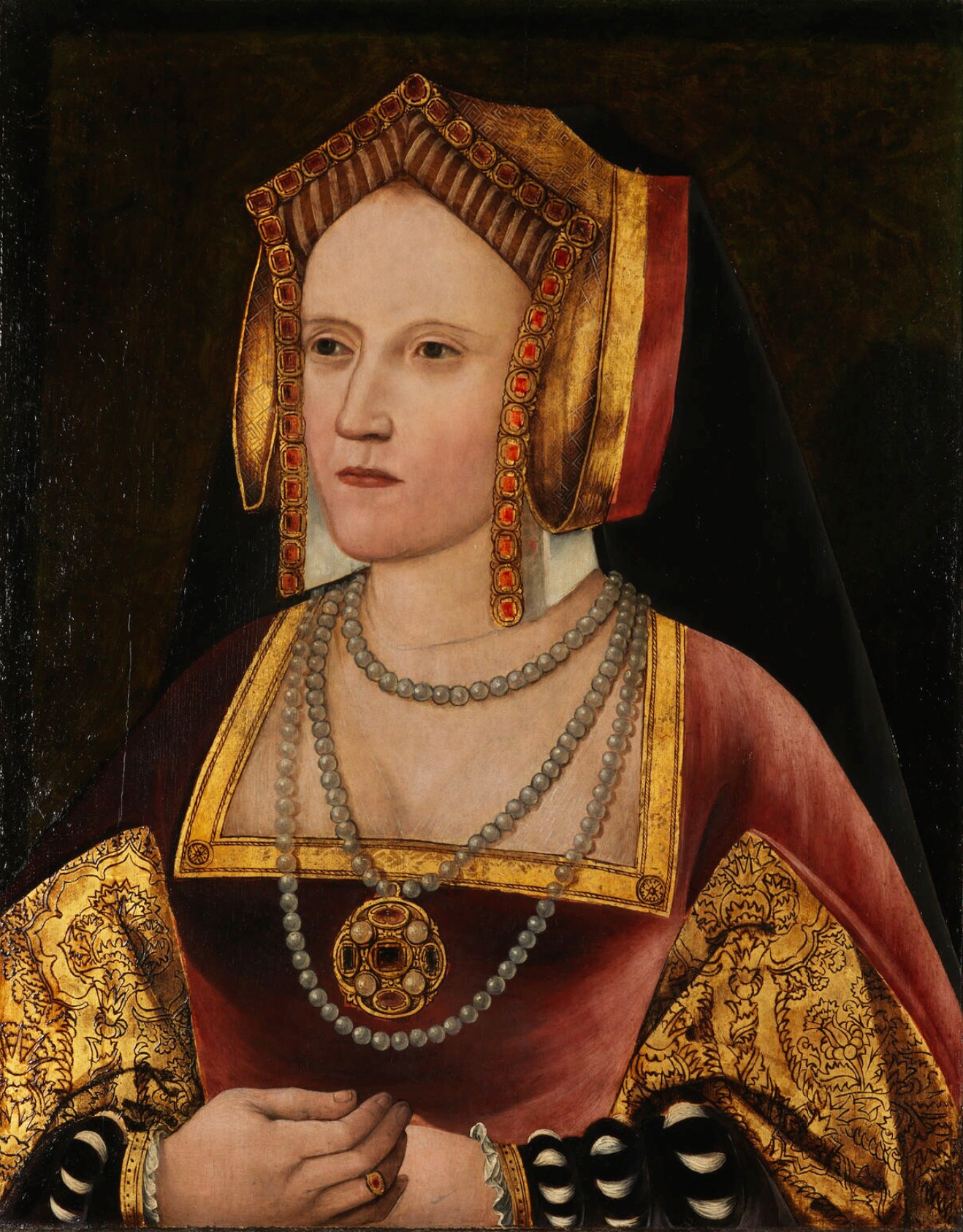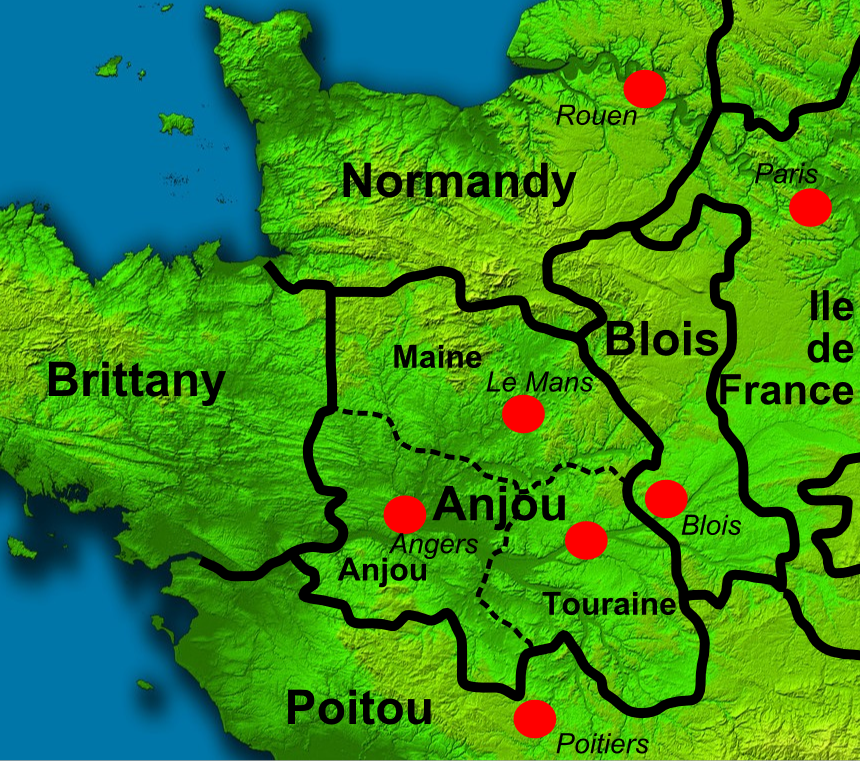|
Wolvesey
Wolvesey Castle, also known as the "Old Bishop's Palace", is a ruined building in Winchester, Hampshire, England that was a bishop's palace, and was briefly fortified during the later years of Henry of Blois, the Bishop of Winchester. History The first building on the site, an eyot in the River Itchen known as ''Wulveseye'' or Wulf's island, was constructed around 970 by Æthelwold of Winchester, the Bishop of Winchester from 963 to 984, as his official residence or palace. Winchester came under siege during the Rout of Winchester in 1141 by the Empress Matilda during the period of civil war known as The Anarchy, and held out for three weeks until relieved by Stephen's wife, Matilda. Subsequently Henry, the brother of Stephen, King of England, enlarged and fortified the palace by building a curtain wall, giving the palace the appearance of a castle. The fortifications were slighted by Henry II after the death of Henry in 1171. In June 1216, Oliver fitz Regis defended ... [...More Info...] [...Related Items...] OR: [Wikipedia] [Google] [Baidu] |
Winchester
Winchester is a City status in the United Kingdom, cathedral city in Hampshire, England. The city lies at the heart of the wider City of Winchester, a local government Districts of England, district, at the western end of the South Downs National Park, on the River Itchen, Hampshire, River Itchen. It is south-west of London and from Southampton, its nearest city. At the 2011 census, Winchester had a population of 45,184. The wider City of Winchester district, which includes towns such as New Alresford, Alresford and Bishop's Waltham, has a population of 116,595. Winchester is the county town of Hampshire and contains the head offices of Hampshire County Council. Winchester developed from the Roman Britain, Roman town of Venta Belgarum, which in turn developed from an Iron Age oppidum. Winchester was one of the most important cities in England until the Norman conquest of England, Norman conquest in the eleventh century. It has since become one of the most expensive and afflue ... [...More Info...] [...Related Items...] OR: [Wikipedia] [Google] [Baidu] |
Henry Of Blois
Henry of Blois ( c. 1096 8 August 1171), often known as Henry of Winchester, was Abbot of Glastonbury Abbey from 1126, and Bishop of Winchester from 1129 to his death. He was a younger son of Stephen Henry, Count of Blois by Adela of Normandy, daughter of William the Conqueror and Matilda of Flanders. Thus, he was a younger brother of Stephen, King of England, and a grandchild of William the Conqueror. Henry was also a major patron of the arts. Early life and education Henry was one of five sons of Stephen II, Count of Blois, by Adela of Normandy (daughter of William the Conqueror) and the younger brother of King Stephen.British History Online: Bishops of Winchester ; accessed on 2 November 2007 His birth date is uncertain, along with his siblings but he was the 4th or youngest son and he was mos ... [...More Info...] [...Related Items...] OR: [Wikipedia] [Google] [Baidu] |
Bishop Of Winchester
The Bishop of Winchester is the diocesan bishop of the Diocese of Winchester in the Church of England. The bishop's seat ('' cathedra'') is at Winchester Cathedral in Hampshire. The Bishop of Winchester has always held '' ex officio'' (except during the period of the Commonwealth until the Restoration of the Monarchy) the office of Prelate of the Most Noble Order of the Garter since its foundation in 1348, and Bishops of Winchester often held the positions of Lord Treasurer and Lord Chancellor '' ex officio''. During the Middle Ages, it was one of the wealthiest English sees, and its bishops have included a number of politically prominent Englishmen, notably the 9th century Saint Swithun and medieval magnates including William of Wykeham and Henry of Blois. The Bishop of Winchester is appointed by the Crown, and is one of five Church of England bishops who sit ''ex officio'' among the 26 Lords Spiritual in the House of Lords, regardless of their length of service. The Dioc ... [...More Info...] [...Related Items...] OR: [Wikipedia] [Google] [Baidu] |
Rout Of Winchester
In the Rout of Winchester (14 September 1141) the army of imprisoned King Stephen of England, led by his wife, Queen Matilda of Boulogne, Stephen's brother Bishop Henry of Blois, and William of Ypres, faced the army of Stephen's cousin Empress Matilda, whose forces were commanded by her half-brother Earl Robert of Gloucester. After Empress Matilda's army besieged a castle on the edge of Winchester, Queen Matilda's army arrived and blockaded the Angevin army within the city. Cut off from supplies, the Angevin army gave up the siege, then was crushed as it began to retreat. Robert of Gloucester was captured and was subsequently exchanged for Stephen, who was returned to the throne of England. However, the civil war known as The Anarchy dragged on with neither side gaining an advantage. Background Stephen usurps the throne When William Adelin drowned in the ''White Ship'', King Henry I of England was left with no male heirs. A second marriage to 18-year-old Adeliza of Louvain w ... [...More Info...] [...Related Items...] OR: [Wikipedia] [Google] [Baidu] |
Oliver Fitz Regis
Oliver fitz Regis or Oliver Fitzroy (died 1218/1219) was an illegitimate son of John, King of England. Oliver's mother was Hawise (Hadwisa), a sister of Fulk FitzWarin. He was probably born before John became king in 1199. Oliver fought for his father during the First Barons' War. In June 1216, he was in command of Wolvesey Castle when it was besieged by Prince Louis of France and the rebel barons. In April 1217, as Louis approached Dover Castle from the sea, Oliver and William of Cassingham attacked the small force which Louis had left behind after the failed siege of Dover in 1216. As a result, Louis was forced to land at Sandwich. In October 1215, Oliver's father rewarded him with a cask of wine. In November 1215, he was given the castle of Tonge. The regents of his half-brother, Henry III, confirmed this grant in June 1217. In July 1216, he was granted the manor of Erdington. In March 1218, he granted control of the estate of Hamedon until Eve de Tracy could reclaim by paym ... [...More Info...] [...Related Items...] OR: [Wikipedia] [Google] [Baidu] |
Winchester Cathedral
The Cathedral Church of the Holy Trinity,Historic England. "Cathedral Church of the Holy Trinity (1095509)". '' National Heritage List for England''. Retrieved 8 September 2014. Saint Peter, Saint Paul and Saint Swithun, commonly known as Winchester Cathedral, is the cathedral of the city of Winchester, England, and is among the largest of its kind in Northern Europe. The cathedral is the seat of the Bishop of Winchester and is the mother church for the ancient Diocese of Winchester. It is run by a dean and chapter, under the Dean of Winchester. The cathedral as it stands today was built from 1079 to 1532 and is dedicated to numerous saints, most notably Swithun of Winchester. It has a very long and very wide nave in the Perpendicular Gothic style, an Early English retrochoir, and Norman transepts and tower. With an overall length of , it is the longest medieval cathedral in the world, and only surpassed by the more recent churches of St Peter's Basilica in Rome, Basi ... [...More Info...] [...Related Items...] OR: [Wikipedia] [Google] [Baidu] |
Mary I Of England
Mary I (18 February 1516 – 17 November 1558), also known as Mary Tudor, and as "Bloody Mary" by her Protestant opponents, was Queen of England and Ireland from July 1553 and Queen of Spain from January 1556 until her death in 1558. She is best known for her vigorous attempt to reverse the English Reformation, which had begun during the reign of her father, Henry VIII. Her attempt to restore to the Church the property confiscated in the previous two reigns was largely thwarted by Parliament, but during her five-year reign, Mary had over 280 religious dissenters burned at the stake in the Marian persecutions. Mary was the only child of Henry VIII by his first wife, Catherine of Aragon, to survive to adulthood. Her younger half-brother, Edward VI, succeeded their father in 1547 at the age of nine. When Edward became terminally ill in 1553, he attempted to remove Mary from the line of succession because he supposed, correctly, that she would reverse the Protestant ref ... [...More Info...] [...Related Items...] OR: [Wikipedia] [Google] [Baidu] |
Philip II Of Spain
Philip II) in Spain, while in Portugal and his Italian kingdoms he ruled as Philip I ( pt, Filipe I). (21 May 152713 September 1598), also known as Philip the Prudent ( es, Felipe el Prudente), was King of Spain from 1556, King of Portugal from 1580, and King of Naples and Sicily from 1554 until his death in 1598. He was '' jure uxoris'' King of England and Ireland from his marriage to Queen Mary I in 1554 until her death in 1558. He was also Duke of Milan from 1540. From 1555, he was Lord of the Seventeen Provinces of the Netherlands. The son of Emperor Charles V and Isabella of Portugal, Philip inherited his father's Spanish Empire in 1556 and succeeded to the Portuguese throne in 1580 following a dynastic crisis. The Spanish conquests of the Inca Empire and of the Philippines, named in his honor by Ruy López de Villalobos, were completed during his reign. Under Philip II, Spain reached the height of its influence and power, sometimes called the Spanish Golden Age, ... [...More Info...] [...Related Items...] OR: [Wikipedia] [Google] [Baidu] |
Roundheads
Roundheads were the supporters of the Parliament of England during the English Civil War (1642–1651). Also known as Parliamentarians, they fought against King Charles I of England and his supporters, known as the Cavaliers or Royalists, who claimed rule by absolute monarchy and the principle of the divine right of kings. The goal of the Roundheads was to give to Parliament the supreme control over executive administration of the country/kingdom. Beliefs Most Roundheads sought constitutional monarchy in place of the absolute monarchy sought by Charles; however, at the end of the English Civil War in 1649, public antipathy towards the king was high enough to allow republican leaders such as Oliver Cromwell to abolish the monarchy completely and establish the Commonwealth of England. The Roundhead commander-in-chief of the first Civil War, Thomas Fairfax, remained a supporter of constitutional monarchy, as did many other Roundhead leaders such as Edward Montagu, 2nd Earl of ... [...More Info...] [...Related Items...] OR: [Wikipedia] [Google] [Baidu] |
English Civil War
The English Civil War (1642–1651) was a series of civil wars and political machinations between Parliamentarians ("Roundheads") and Royalists led by Charles I ("Cavaliers"), mainly over the manner of Kingdom of England, England's governance and issues of religious freedom. It was part of the wider Wars of the Three Kingdoms. The First English Civil War, first (1642–1646) and Second English Civil War, second (1648–1649) wars pitted the supporters of King Charles I of England, Charles I against the supporters of the Long Parliament, while the Third English Civil War, third (1649–1651) saw fighting between supporters of King Charles II of England, Charles II and supporters of the Rump Parliament. The wars also involved the Covenanters, Scottish Covenanters and Confederate Ireland, Irish Confederates. The war ended with Parliamentarian victory at the Battle of Worcester on 3 September 1651. Unlike other list of English civil wars, civil wars in England, which were mainly ... [...More Info...] [...Related Items...] OR: [Wikipedia] [Google] [Baidu] |
Stephen Of England
Stephen (1092 or 1096 – 25 October 1154), often referred to as Stephen of Blois, was King of England from 22 December 1135 to his death in 1154. He was Count of Boulogne '' jure uxoris'' from 1125 until 1147 and Duke of Normandy from 1135 until 1144. His reign was marked by the Anarchy, a civil war with his cousin and rival, the Empress Matilda, whose son, Henry II, succeeded Stephen as the first of the Angevin kings of England. Stephen was born in the County of Blois in central France as the fourth son of Stephen-Henry, Count of Blois, and Adela, daughter of William the Conqueror. His father died while Stephen was still young, and he was brought up by his mother. Placed into the court of his uncle Henry I of England, Stephen rose in prominence and was granted extensive lands. He married Matilda of Boulogne, inheriting additional estates in Kent and Boulogne that made the couple one of the wealthiest in England. Stephen narrowly escaped drowning with Henry I's son, ... [...More Info...] [...Related Items...] OR: [Wikipedia] [Google] [Baidu] |
William Giffard
William Giffard (died 23 January 1129),Franklin "Giffard, William" ''Oxford Dictionary of National Biography'' was the Lord Chancellor of England of William II and Henry I, from 1093 to 1101,Fryde, et al. ''Handbook of British Chronology'' p. 83 and Bishop of Winchester (1100–1129). Giffard was the son of Walter Giffard, Lord of Longueville and Ermengarde, daughter of Gerard Flaitel.Keats-Rohan ''Domesday People'' p. 456 He also held the office of Dean of Rouen prior to his election as bishop.Spear "Norman Empire" ''Journal of British Studies'' p. 7 On 3 August 1100 he became bishop of WinchesterFryde, et al. ''Handbook of British Chronology'' p. 276 by nomination of Henry I. Henry nominated him probably in an attempt to win the support of the clergy in Henry's bid to claim the throne directly after the death of William Rufus.Teunis "Coronation Charter of 1100" ''Journal of Medieval History'' p. 138 He was one of the bishops elect whom Archbishop Anselm of Canterbury refu ... [...More Info...] [...Related Items...] OR: [Wikipedia] [Google] [Baidu] |








